
Introduction
The long awaited and much anticipated Sandy Bridge architecture from Intel hit the ground running at CES just 2 weeks ago. This architecture promises better overall performance, the latest version of Intel Turbo Boost Technology 2.0, and great overclocking potential. Not only does this 2nd Gen series of processors offer a bump in speed but the integration of graphics chip and CPU has improved drastically. The original Core (i5) series with integrated graphics were less than acceptable for gaming and only average for today’s age of high definition multimedia. We need technology solutions that support the current explosion of digital media. The growing trend of digital media needs more power! How many of you use iTunes, Grooveshark, Hulu PlusHD, NetFlix HD Streaming, Amazon VOD, Blu Ray playback, or other multimedia services? These services demand CPU and graphics performance now. Gamers on a budget or those thinking green will happy to note the usable integrated graphics, early reports show promising results with PC gameplay on the 2nd Gen Intel Core series. Intel Released the first line in the new series, the 2nd Gen Core i5, at the CES conference earlier this month. The 2nd Gen Core i5 is impressive and a welcomed upgrade to the existing Core i series. The existing core i5’s consist of a 32nm CPU and 45nm GPU combined onto the same die, this 2nd Gen version of the Core series is manufactured using the 32nm process for both the CPU and the GPU, translation: better GPU performance, roughly same size die, more transistors, more speed!
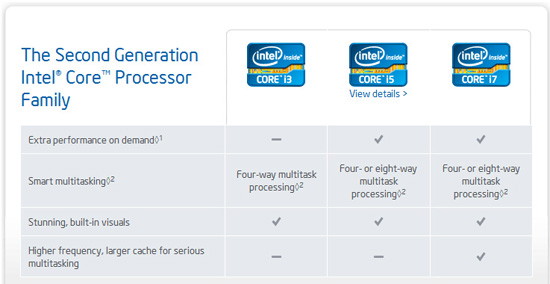
Overview of the 2nd Gen Intel Cores Series codename ‘Sandy Bridge’
Today we have an engineering sample of Intel’s 2nd Gen Core i5 2500K Sandy Bridge CPU, the K stands for ‘unlocked’ meaning overclocking is available and easy to implement! With a stock clock of 3.3Ghz, turbo of 3.7Ghz, 4 Cores, 4 Threads, and 6MB of L3 cache the 2500K is a serious power house that promises to deliver performance wherever you need it. From basic multitasking; web browsing, email, office applications; to PC gaming, high definition video playback, picture editing, online HD streaming, and more all available on Intel’s 2nd Series of processors. Oh did I mention the multiplier that can reach x63? Translation a possible overclock to 6.3Ghz is theoretically possible from this piece of silicon mastery.
Join us as we give you a full report on this successor to the Nehalem architecture…
Intel’s Take:
TAKING PRODUCTIVITY TO THE NEXT LEVEL; the 2nd Generation Intel® Core™ i5 Processor. The Intel® Core™ i5 processor delivers the next level of productivity. With Intel® Turbo Boost Technology 2.0, this quad-core processor with 4-way multitasking capability delivers extra speed whenever you need it as well as security features to help protect information and data.
Experience the advantages of great responsiveness and performance that automatically adapts to whatever you’re doing. Whether you use your PC for simple applications and photos or venture into 3D gaming and HD videos, now you can have a visibly better PC experience with the 2nd generation Intel® Core™ i5 processor.
–~~~~~~~~~~~~–
2nd Gen Intel® Core Processor Family
Intel’s 2nd Gen Core processors integrate a suite of technologies built right into the processor that deliver stunning visual experiences, performance increases , and better power efficiency for greater speed without sacrificing battery life all at an affordable price. The 2nd Gen Core series would best be described as having your cake and eating it too, I’ll elaborate… You want to build or buy a new desktop or laptop computer and with the economy still on the rock you don’t have a huge budget to work with. You need something powerful and capable of doing day to day tasks, web browsing, checking email, writing a school paper, etc but you want the capacity to do more. How about watching DVD/Blu Ray/HD movies, streaming Hulu/Netflix, editing the movie from your vacation, encoding videos for your iPod, playing the occasional game of Lost Planet or Sid Meier’s Civilization? Usually you would have to consider jumping up in price bracket or settle for the so-so system that fits your budget… well the 2nd Gen Core series is here to fit your budget AND your demands. The visibly smart performance of the 2nd Gen series will enable you to do the basics and automatically speed up to deliver the extra performance when you need it. The smart design of the 2nd Gen also considers your mobile needs with greater power efficiency to save you battery when you don’t demand the extra performance. Updates and additions to the existing feature-set of the Core i series of processors really make the 2nd Gen series a excellent all round choice for ever increasing demands of the digital age.
The 2nd Gen Intel Core processor family features new and improved technologies built in to the chip:
- Intel® Turbo Boost Technology 2.0 dynamically increases the processor frequency as needed by taking advantage of thermal and power headroom when operating below specified limits.
- Basically this feature enables the processor to clock up and down depending on demand, more power when you need it, less power to save battery when there is less demand.
- Intel® Smart Cache is dynamically allocated to each processor core based on workload, which significantly reduces latency and improves performance.
- Up to 8MB of shared smart cache
- More cache available on the fly translate to a faster overall experience
- Advanced Encryption Standard New Instructions add hardware acceleration to AES algorithms and speeds up the execution of AES applications.
- Dual Channel DDR3 Memory Support up to 32GB
- H67 chipset supports speeds of DDR3-1066/DDR3-1333 max
- P67 chipset supports speeds up to DDR3-1600, DDR3-1866, and DDR3-2133 max
- Max Memory Bandwidth 21 GB/s
- Intel® HD Graphics with Dynamic Frequency
- Full integration of GPU into the CPU, graphics and processor housed in the one chip
- Will provide a frequency boost increasing graphics performance on demand
- Provides power savings benefit when full-on graphics is not needed, mostly a laptop battery friendly feature
- Base graphics frequency of 850 MHz
- Integration of graphics into the CPU die with HDMI spec 1.4 featuring available stereoscopic 3D and next version of Intel Wireless Display technology WIDI v2.0
-
Dual Display Capable
- Intel® Clear Video HD Technology
- High Definition playback technology on board
-
Intel® Quick Sync Video Technology
- Intel GPU utilized to encode/decode video
- H67 chipset motherboards only
- Available Intel Advanced Technologies
- Intel Virtualization Technology (VT-x)
- Intel Active Management Technology 7.0 (AMT)
- Intel Trusted Execution Technology (TXT)
- Intel Streaming SIMD Extensions 4.1 (SSE4.1)
- Intel Streaming SIMD Extensions 4.2 (SSE4.2)
- Intel Hyper-Threading Technology (HT)
- Intel Advanced Vector Extensions (AVX)
- Intel 64 Architecture
- Execute Disable Bit
- Intel® Fast Memory Access
- Updated Graphics Memory Controller Hub (GMCH)
- Intel® Flex Memory Access
- Facilitates easier upgrades by allowing different memory sizes to be populated and remain in dual-channel mode
- Intel Socket LGA1155
Closer Look
The processor we have for review today is the Intel® Core™ i5-2500K processor. It is a 4 core, 4 thread 32nm CPU with a stock speed of 3.3 Ghz featuring 6MB of L3 cache and available Turbo to 3.7 Ghz. Sharing the same silicon with the CPU is the integrated Intel HD Graphics with a base frequency of 850 Mhz with max dynamic frequency of 1.10 GHz. The marriage of a high performance multi-core CPU and HD graphics GPU with 6MB of shared cache between CPU and Graphics equals better performance.
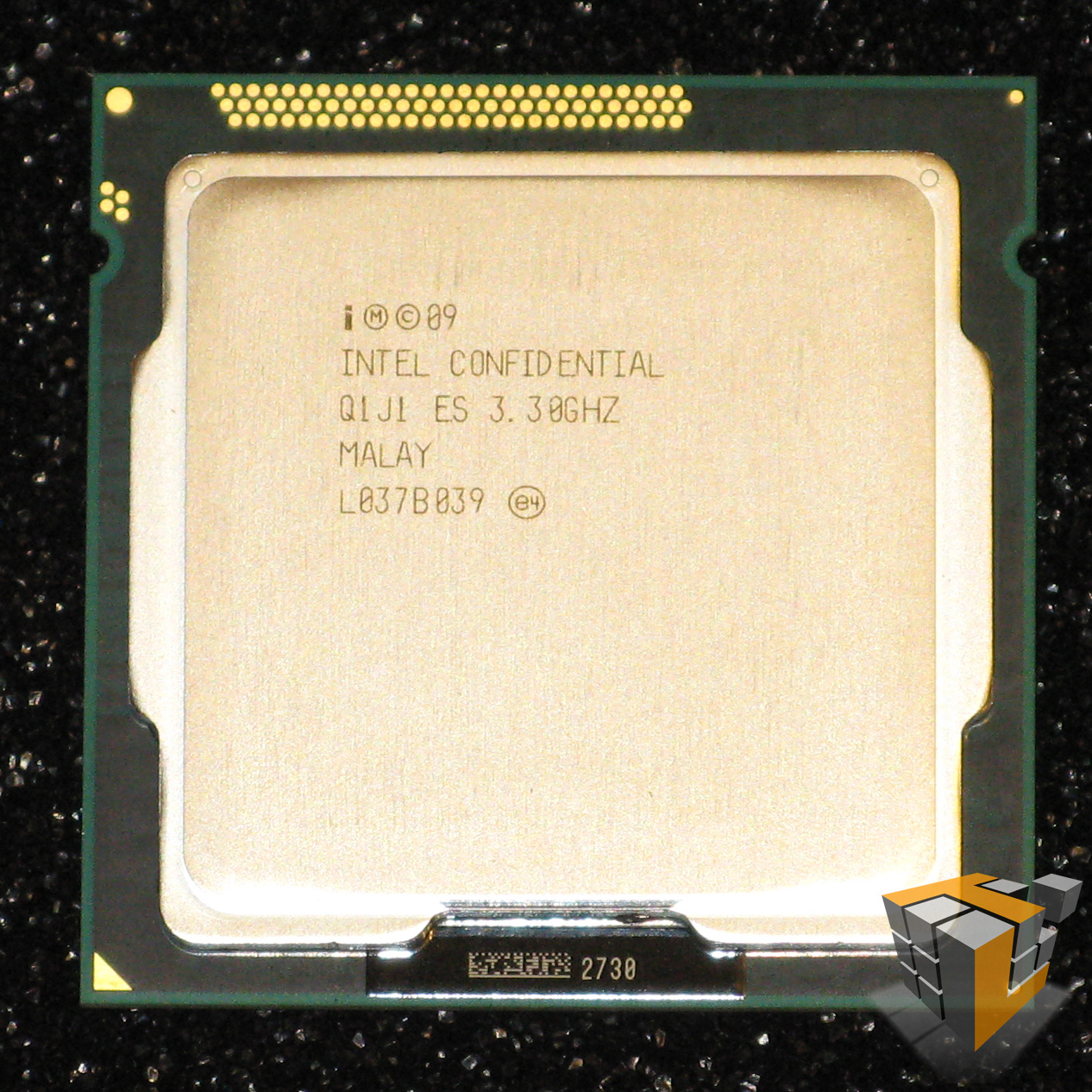 |
…. | 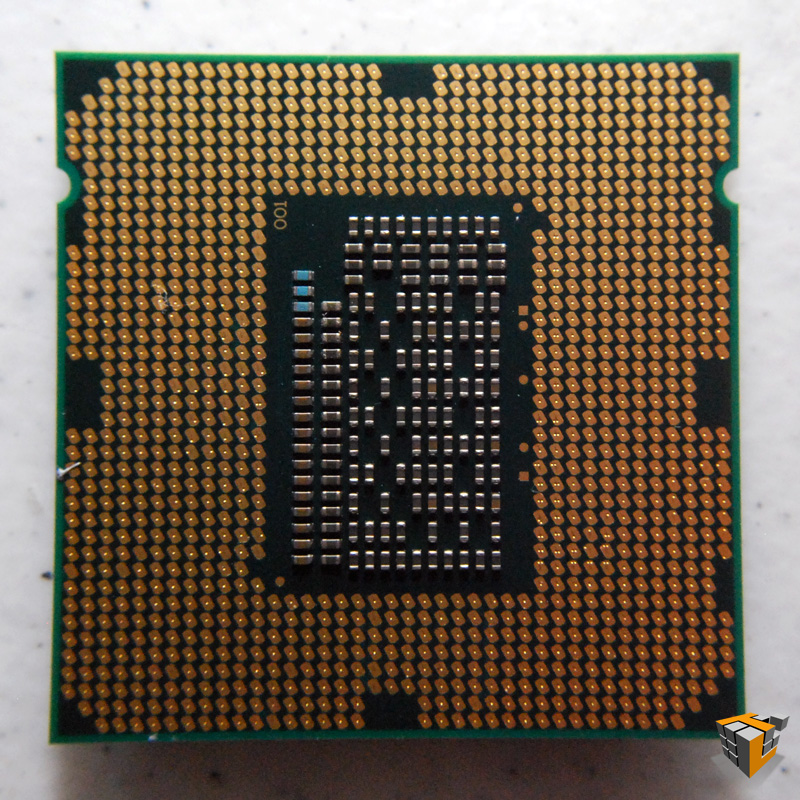 |
| . | ||
 |
…. | |
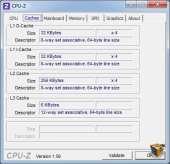 |
||
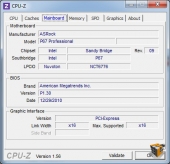 |
||
CPU-Z information showing Intel 2500K, cache specs, and mainboard model.
Specifications
| Intel® Core™ i5-2500K Processor (6M Cache, 3.30 GHz) | |
| Status | Launched |
| Launch Date | Q1’11 |
| Processor Number | i5-2500K |
| # of Cores | 4 |
| # of Threads | 4 |
| Clock Speed | 3.3 GHz |
| Max Turbo Frequency | 3.7 GHz |
| Intel® Smart Cache | 6 MB |
| Bus/Core Ratio | 33 |
| Instruction Set | 64-bit |
| Instruction Set Extensions | SSE4.1/4.2, AVX |
| Embedded Options Available | No |
| Lithography | 32 nm |
| Max TDP | 95 W |
| Tray 1ku Budgetary Price | $216.00 |
| Memory Specifications | |
| Max Memory Size (dependent on memory type) |
32 GB |
| Memory Types | DDR3-1066/1333 + |
| # of Memory Channels | 2 |
| Max Memory Bandwidth | 21 GB/s |
| ECC Memory Supported | No |
Test Setup
All tests were performed on the following system featuring the latest ASRock Fatal1ty P67 Professional mainboard:
| CPU | Intel Core i5 2500K @ 3.3GHz |
| Heatsink | Thermalright Silver Arrow (Dual Fans) |
| Motherboard | ASRock P67 Professional |
| Chipset | Intel® P67 Chipset |
| Graphics card | AMD ATI 6950 |
| RAM | 2x2GB Kingston DDR3-2133 , CL9 |
| Sound | Realtek ALC892 |
| SSD | 240GB Patriot Inferno PI240GS25SSDR |
| Power Supply | NZXT HALE90 80+Gold Class 750W |
| Case | Cooler Master HAF912 |
| OS | Windows 7 Ultimate |
| Drivers | Intel P67 Chipset 9.2.0.1021 ATI Catalyst 10.12 |
Pictures of Test Rig:
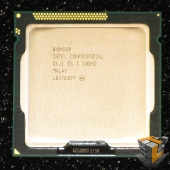 |
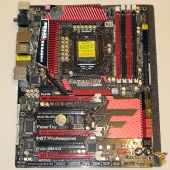 |
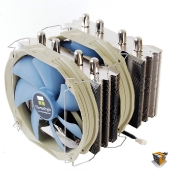 |
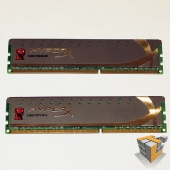 |
CPU Benchmarks
Now you’ve seen the specs lets get down to the number crunching, we need some numbers to prove that the 2nd Gen Core series is really bad ass on paper and on the bench! We rounded up our trusty collection of benchmark software that will stress the Core i5 2500K and give us some data which will will interpret into useful (and comparable) information. Keep in mind the results provided individual benchmark software are synthetic and are only able to assess the relative performance of the given system. The results of each test should be considered a reasonable evaluation of performance, and are better used to compare the performance of different systems. The numbers produced by benchmarking do not prove the efficiency, speed, and power of the processor being tested; it is much more useful and preferred to compare the results from this processor to another make/model of processor to show the differences in efficiency, speed, and power.
Luckily many of the best benchmark suites, and we only use the best, provide baseline data and comparison data to allow us to present you with actual information instead of just a table of numbers. Keep in mind that in some of the following tests lower numbers are better (for example latency, time to complete an operation, etc) and in some test higher numbers are better (MB/s, scores, GFLOPS, etc). But have no fear, we will guide you through the results and point out anomalies and interesting results. Todays testing will include the following benchmarking software: AIDA64 v1.50.1230, PCMark Vantage x64, PerformanceTest v7.0, and SiSoftware Sandra 2011c.
The Intel® Core i5 2500K is an unlocked processor meaning we can easily bump up the multiplier (up to a theoretical x63) to squeeze more speed and power from the CPU. Thankfully ASRock provided the Fatal1ty P67 Professional motherboard, a prime candidate for overclocking out 2500K CPU. First all benchmarks will be run with the multiplier set to the default x33 which means the CPU will run at stock 3.3 Ghz (up to 3.7 Ghz turbo). This will be considered out baseline for later when we up the multiplier to x48 (4.8 GHz running).
First up to bat is AIDA64…
Benchmarks – Stock 3.3Ghz (Turbo 3.7Ghz)
AIDA64 v1.50.1230
AIDA64 Extreme Edition is a streamlined Windows diagnostic and benchmarking software which provides a wide range of features to assist in overclocking, hardware error diagnosis, stress testing, and sensor monitoring. It has unique capabilities to assess the performance of the processor, system memory, and disk drives. For our purposes today, AIDA64 is able to test the limits of the CPU with a collection of tasks such as AES data encryption and gives us performance based on numbers. These numbers allow us to compare the Intel® 2nd Gen Core i5 2500K to other processors available on the market. The 5 CPU tests provided in AIDA64 are Queen, PhotoWorxx, ZLib, AES, and Hash.
CPU Queen focuses on a chess related problem, solutions for the classic “Queens problem” on a 10 by 10 chessboard (more info here), using integer MMX, SSE2 and SSSE3 optimizations and focuses on the branch prediction capabilities and the misprediction penalties of the CPU. A CPU with the shorter pipeline and smaller amount of mispredictions will score higher. Basically this test is a number crunching math problem for the CPU.
CPU PhotoWorxx performs the following tasks on a very large RGB image: fill, flip, rotate left, rotate right, random color fill, color to b&w, difference, and crop. These are common tasks used during digital photo processing. This benchmark stresses the integer arithmetic and multiplication execution units of the CPU and also the memory subsystem.
CPU ZLib is an integer benchmark which measures combined CPU and memory subsystem performance through the public ZLib compression library, a software library used for data compression.
CPU AES is an integer benchmark measuring CPU performance using AES (Rijndael) data encryption. The 2500K should perform extremely well in this test due to hardware support and the New AES instruction set available in the Intel Core processors family.
CPU Hash is another integer benchmark measuring CPU performance using the SHA1 hashing algorithm. The code behind this benchmark method is written in Assembly, and it is optimized for every popular AMD, Intel and VIA processor core variants by utilizing the appropriate MMX, MMX+/SSE, SSE2, SSSE3, or AVX instruction set extension. In this benchmark every thread is working on independent 8 KB data blocks, and the MMX, SSE2 and SSSE3 optimized calculation routines implement the latest vectorization idea of Intel.
 |
 |
| CPU Queen – 5th | CPU PhotoWorxx – 1st |
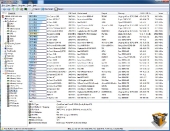 |
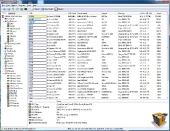 |
| CPU ZLib – 7th | CPU AES – 1st |
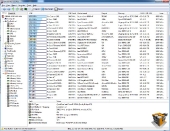 |
|
| CPU Hash – 9th | |
Excellent results all round proving the 2nd Gen Core i5 2500K CPU is ready, willing, and able to perform all the number crunching, compression, and imagery tasks on demand. Maybe with some overclocking we would see 1st place in all 5 tests?
PCMark Vantage x64
This benchmark is a series of tests requiring the CPU, memory sub system, caches, GPU and more.
A PCMark score is a measure of your computer’s performance across a variety of common tasks such as viewing and editing photos, video, music and other media, gaming, communications, productivity and security. From desktops and laptops to workstations and gaming rigs, by comparing your PCMark Vantage score with other similar systems you can find the hardware and software bottlenecks that stop you getting more from your PC.
At the time of testing we only had a P67 motherboard available so we won’t be testing the integrated GPU of the Intel 2nd Gen family, instead our stand-in the ATI 6950 will carry the load. The 2nd Gen series is aimed at visuals which are majorly supported by the GPU, but no GPU is worth its weight in silicon without a high performing CPU.
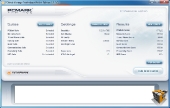 |
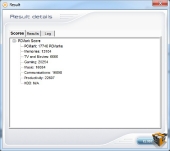 |
| How the test was setup to run | Results – 17746 Marks |
Another successful PASS for the 2500K. The results of PCMark Vantage are incredibly useful when comparing systems and also comparing overclocking performance increase as we will see later on…
PerformanceTest v7.0
Another performance benchmark suite in our arsenal is PerformanceTest from PassMark. PassMark PerformanceTest allows you to objectively benchmark a PC using a variety of different speed tests and compare the results to other computers. We will use this suite to show the performance of the i5 2500K versus existing Core family processors. This benchmark will also provide a clear indication of performance increases gained from overclocking later in this article.
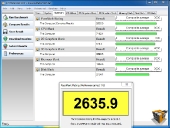 |
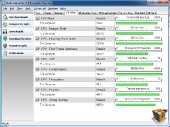 |
| PassMark Rating- 2635.9 | CPU Rating – 7102 |
 |
|
|
Detailed CPU comparison to i5 650, i5 760, and i7 920 The Core i5 2500K is in green |
|
The 2nd Gen Core i5 2500K is more than capable and it shows. Pay close attention to the comparison graph, this will serve as a great visual indicator of performance increase during overclocking later on.
SiSoftware Sandra 2011c
The Sandra suite give us a more detailed look at the processor performance in particular areas of interest. There are 5 processor benchmarks of interest for our purposes today.
The table below has 5 rows, 1 for each test; each row has 3 graphs. The left graph is the combined result, the center graph compares the 2 components tested, the last right chart is ‘Performance vs Speed’ best results of this graph are furthest to the right and nearest the top of the chart.
Overall the results translate as follows: higher results or longer bars equal better performance, with the exception of the Multi-Core Efficiency latency test in row 3 highlight in orange (bottom half of the image labeled ‘Inter-Core Efficiency’).
Processor Arithmetic: Benchmarks the ALU and FPU processor units. Shows how your processors handle arithmetic and floating point instructions in comparison to other typical processors.
Processor Multi-Media: Benchmark the SIMD processor units. Shows how your processors handle multi-media instructions and data in comparison to other typical processors.
Power Management Efficiency: Benchmark the power management efficiency of the processors. Shows how efficient the power management of your processors is in comparison to other typical processors.The ability of the processors to step-down in frequency and voltage at different workloads is measured. The more a processor steps down in both frequency and voltage the better the score at the specific workload. The test stops when the workload is too great the processor even at 100% efficiency.
Multi-Core Efficiency: Benchmark the multi-core efficiency of the processors. Shows how efficient the processor cores and their inter-connects are in comparison to other types to other typical processors. The ability of the cores to process data blocks and pass them to another core for processing (producer-consumer paradigm) of different sizes and different chain sizes is measured. The efficiency of the inter-connect between cores is thus benchmarked; however, the number of cores (and processors) also counts as more data buffers can be processed simultaneously (aka “in flight”).
Cryptography: Measures the cryptography efficiency of the processor units: encryption, decryption and hashing. Shows how your processors handle cryptographic operations in comparison to other typical processors.
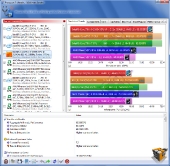 |
 |
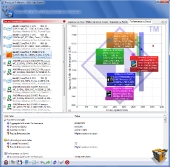 |
| Processor Arithmetic | ||
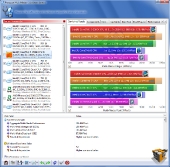 |
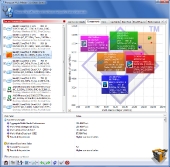 |
 |
| Processor Multi-Media | ||
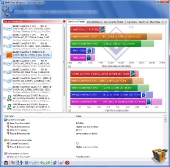 |
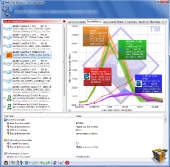 |
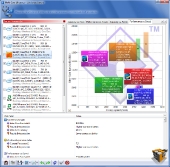 |
| Multi-Core Efficiency | ||
 |
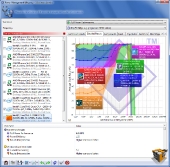 |
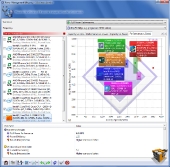 |
| Power Management Efficiency | ||
 |
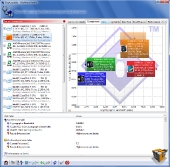 |
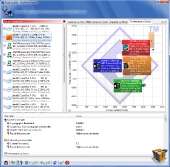 |
| Cryptography | ||
Overclock
Select 2nd Gen Core family processors delimited with a ‘K’ in the product identification are unlocked meaning the multiplier can be adjusted to change the overall CPU speed. Basically CPU speed = CPU Ratio (or multiplier) times Base clock frequency (or BCLK). Although the BCLK is able to adjust -/+ 10% it is best practice to leave it at the default and specified 100MHz.
Benchmarks – Overclocked to 4.0Ghz
With the multiplier set at 40 and a base clock of 100Mhz means 40 x 100Mhz = 4000Mhz or 4.0Ghz. Turbo speed is now available up to 4.4Ghz to give even the overclock an extra boost if/when needed. The CPU averaged about 30C/84F doing basic word processing and web browsing. Now lets see how that 21% increase affects the benchmark results!
AIDA64 v1.50.1230
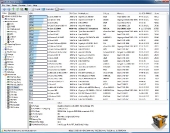 |
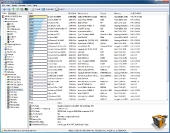 |
| CPU Queen – 5th |
CPU PhotoWorxx – 1st |
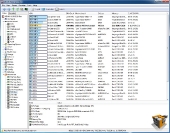 |
 |
| CPU Zlib – 4th | CPU AES – 1st |
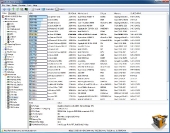 |
|
| CPU Hash – 7th | |
In our AIDA64 benchmarks we find improvements in scores in all 5 tests. Results in the CPU ZLib and Hash test move the 2500K up in rank from 7th to 4th and 9th to 7th respectively. Only 23 points separate the 2500K and the Intel Core i7 Extreme 965 processor in the CPU Queen test.
PCMark Vantage x64
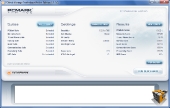 |
 |
| How the test was setup to run | Results – 19531 Marks; up from 17746 stock |
The 2500K overclock to 4.0GHz gains ~1800 Marks in the PCMark Vantage test suite showing that even this small overclock will squeeze extra juice from the 2nd Gen CPU.
PerformanceTest v7.0
Overall we see about 17% increase in performance indicated by the PerformanceTest suite, not bad for a 21% overclock.
SiSoftware Sandra 2011c
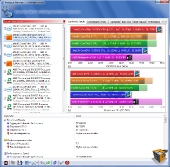 |
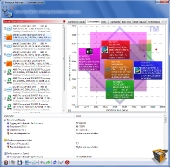 |
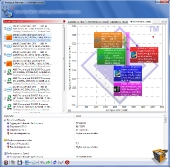 |
| Processor Arithmetic | ||
 |
 |
 |
| Processor Multi-Media | ||
 |
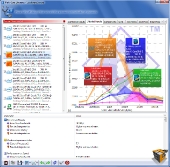 |
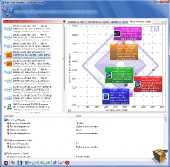 |
| Multi-Core Efficiency | ||
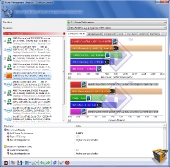 |
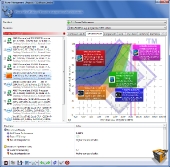 |
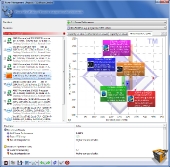 |
| Power Management Efficiency | ||
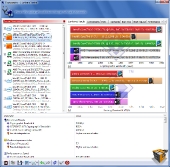 |
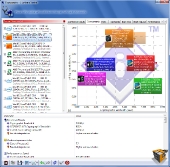 |
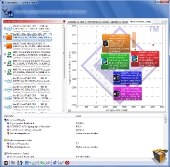 |
| Cryptography | ||
Benchmarks – Overclocked to 4.8Ghz stable
You want more? OK how about we up the multiplier to 48 to give us a CPU speed of 4.8GHz! This was the highest stable and reliably boot-able speed we were able to attain in testing. The CPU averaged about 47C/117F doing basic word processing and web browsing. With further tweaking and adjusting advanced voltages it may be possible to push the CPU further but in order to finish up our comparative review and not cause permanent damage to the CPU we decided to stop at 4.8GHz or 45% overclock… Not too shabby!
AIDA64 v1.50.1230
Still gaining ground in the AIDA64 suite at 4.8GHz overclocked!
PCMark Vantage x64
 |
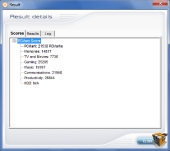 |
| How the test was setup to run | Results – 21538 Marks |
The 2500K is saying “I’m hungry, give me more” and just like the energizer bunny it keeps going on up the ranks. 10% increase over the 4.0 GHz OC’d marks, and 21% increase overall from 3.3 GHz stock. Wow.
PerformanceTest v7.0
Further proof of the 2nd Gen unlocked processor potential that can be harvested with a solid P67 chipset and adequate cooling.
SiSoftware Sandra 2011c
Again better performance in all tests.
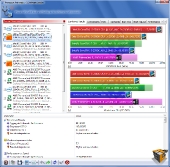 |
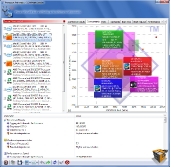 |
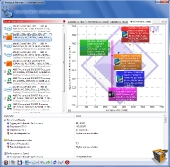 |
| Processor Arithmetic | ||
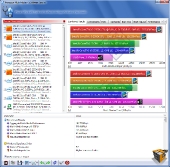 |
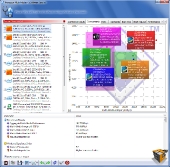 |
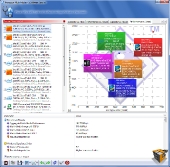 |
| Processor Multi-Media | ||
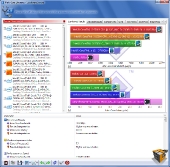 |
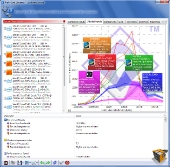 |
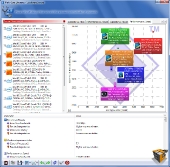 |
| Multi-Core Efficiency | ||
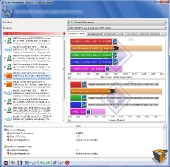 |
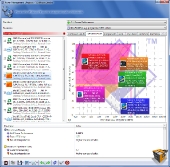 |
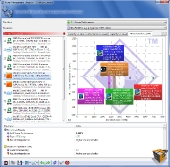 |
| Power Management Efficiency | ||
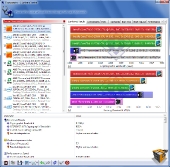 |
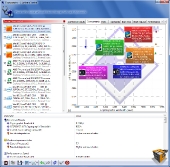 |
 |
| Cryptography | ||
Summary
The Intel 2nd Gen Core family processors enter the market at a time when digital media is highly demanding of both CPU and graphics performance. Marriage of upgraded existing Core family technology and integration of a decent HD GPU into the single 32nm die hits the mark all across the board. Multi-core computing is now the standard for even the basic desktop computer, but existing technology has been lacking in many areas including HD quality graphics integration. Intel has proven once again they can do their homework, listen to customer feedback, and produce a winner at a price point that is accessible to most consumers. With the entry level Core i5 family processor i5-2300 @ 2.80 GHz retailing for about $184.99 the speed and visibly smart performance of the 2nd Gen Core family is affordable. Today’s review CPU, the i5-2500K @ 3.3 GHz unlocked currently sells for $224.99 at NewEgg.com which is not that huge of a price step-up for the performance hungry enthusiast that does not want to break the bank.

Conclusion
Since the introduction of the 486 in 1989, Intel Corporation has accelerated microprocessor development releasing many successful architectures for enterprise and consumer applications. The existing Core i3, i5, and i7 family processors are still excellent performers as CPU’s but the 2nd Gen series’ inclusion of Intel HD Video GPU was a positive move forward. Most consumers could not care about what makes the machine go, all they understand is cost and visible performance. 2nd Gen Intel Core processor family solves the common issue experienced by many unhappy computer users, great CPU speed but sub-par graphics performance. Without discrete graphics options installed alongside many existing processors are bashed because you couldn’t watch that Hulu Plus video in HD. Computer performance is no longer a function of CPU speed alone, graphics performance and high-performance memory (RAM) are just as important. Solid State Drive (SSD) technology is also rapidly penetrating the market. All components combined create the experience for the user. Congratulation Intel for a job well done!
.
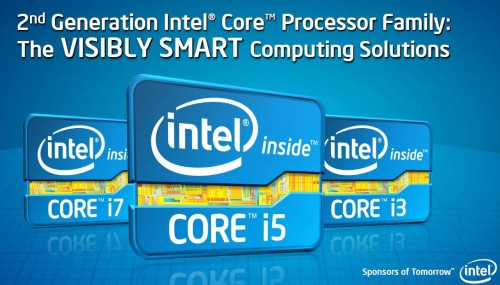
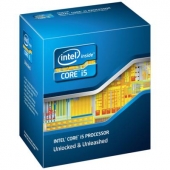
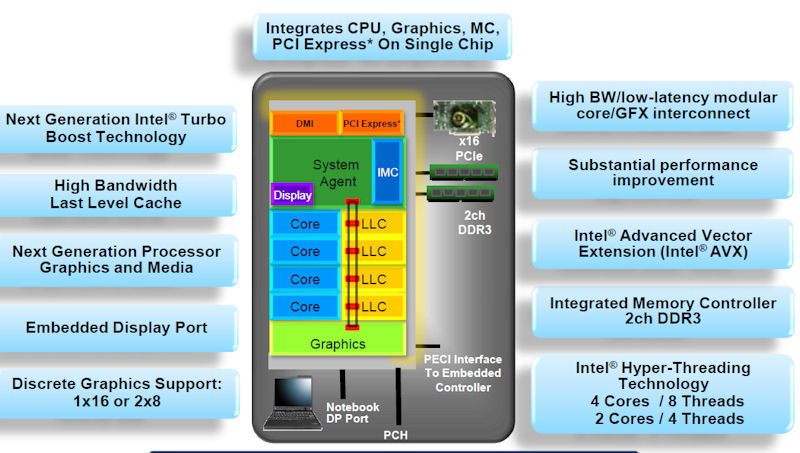

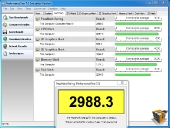
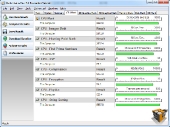
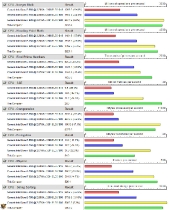
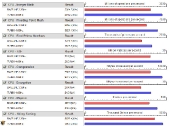
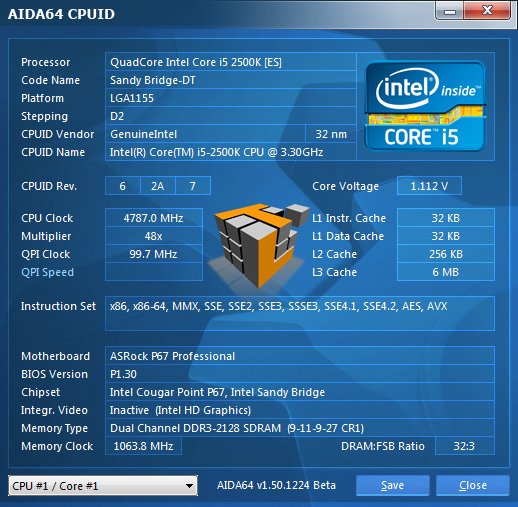
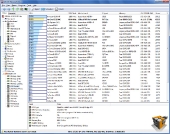
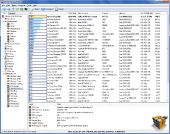
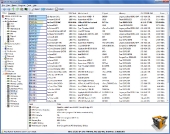
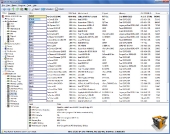
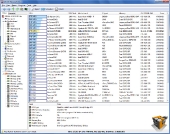
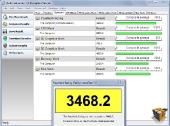
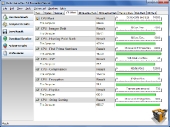
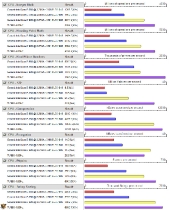


[…] CardBjorn3D spends some time with the ZOTAC ZBOXHD-ID34BR-UTechwareLabs shares its thoughts on the Intel Core i5 2500K Sandy Bridge CPUFinally, TechRadar takes a look at the Samsung B2330 HDShare and Enjoy:Tags: Bjorn3D, eTeknix, […]